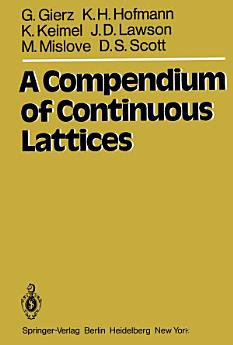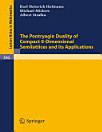關於本電子書
A mathematics book with six authors is perhaps a rare enough occurrence to make a reader ask how such a collaboration came about. We begin, therefore, with a few words on how we were brought to the subject over a ten-year period, during part of which time we did not all know each other. We do not intend to write here the history of continuous lattices but rather to explain our own personal involvement. History in a more proper sense is provided by the bibliography and the notes following the sections of the book, as well as by many remarks in the text. A coherent discussion of the content and motivation of the whole study is reserved for the introduction. In October of 1969 Dana Scott was lead by problems of semantics for computer languages to consider more closely partially ordered structures of function spaces. The idea of using partial orderings to correspond to spaces of partially defined functions and functionals had appeared several times earlier in recursive function theory; however, there had not been very sustained interest in structures of continuous functionals. These were the ones Scott saw that he needed. His first insight was to see that - in more modern terminology - the category of algebraic lattices and the (so-called) Scott-continuous functions is cartesian closed.
為這本電子書評分
歡迎提供意見。
閱讀資訊
智慧型手機與平板電腦
筆記型電腦和電腦
你可以使用電腦的網路瀏覽器聆聽你在 Google Play 購買的有聲書。
電子書閱讀器與其他裝置
如要在 Kobo 電子閱讀器這類電子書裝置上閱覽書籍,必須將檔案下載並傳輸到該裝置上。請按照說明中心的詳細操作說明,將檔案傳輸到支援的電子閱讀器上。





